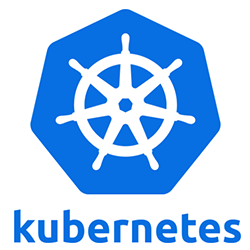Container Storage Interface (CSI) for Kubernetes GA


Author: Saad Ali, Senior Software Engineer, Google
The Kubernetes implementation of the
The GA milestone indicates that Kubernetes users may depend on the feature and its API without fear of backwards incompatible changes in future causing regressions. GA features are protected by the Kubernetes deprecation policy. Although prior to CSI Kubernetes provided a powerful volume plugin system, it was challenging to add support for new volume plugins to Kubernetes: volume plugins were “in-tree” meaning their code was part of the core Kubernetes code and shipped with the core Kubernetes binaries—vendors wanting to add support for their storage system to Kubernetes (or even fix a bug in an existing volume plugin) were forced to align with the Kubernetes release process. In addition, third-party storage code caused reliability and security issues in core Kubernetes binaries and the code was often difficult (and in some cases impossible) for Kubernetes maintainers to test and maintain. CSI was developed as a standard for exposing arbitrary block and file storage storage systems to containerized workloads on Container Orchestration Systems (COs) like Kubernetes. With the adoption of the Container Storage Interface, the Kubernetes volume layer becomes truly extensible. Using CSI, third-party storage providers can write and deploy plugins exposing new storage systems in Kubernetes without ever having to touch the core Kubernetes code. This gives Kubernetes users more options for storage and makes the system more secure and reliable. With the promotion to GA, the Kubernetes implementation of CSI introduces the following changes: Kubernetes users interested in how to deploy or manage an existing CSI driver on Kubernetes should look at the documentation provided by the author of the CSI driver. Assuming a CSI storage plugin is already deployed on a Kubernetes cluster, users can use CSI volumes through the familiar Kubernetes storage API objects: Although the Kubernetes implementation of CSI is a GA feature in Kubernetes v1.13, it may require the following flag: You can enable automatic creation/deletion of volumes for CSI Storage plugins that support dynamic provisioning by creating a The following StorageClass, for example, enables dynamic creation of “ New for GA, the
Dynamic provisioning is triggered by the creation of a When volume provisioning is invoked, the parameter type: If the You can always expose a pre-existing volume in Kubernetes by manually creating a PersistentVolume object to represent the existing volume. The following You can reference a When the pod referencing a CSI volume is scheduled, Kubernetes will trigger the appropriate operations against the external CSI plugin ( For more details please see the CSI implementation documentation. The
Storage vendors can build Kubernetes deployments for their plugins using these components, while leaving their CSI driver completely unaware of Kubernetes. CSI drivers are developed and maintained by third parties. You can find a non-definitive list of CSI drivers
There is a plan to migrate most of the persistent, remote in-tree volume plugins to CSI. For more details see . The GA implementation of CSI has the following limitations: The Kubernetes Slack channel
This project, like all of Kubernetes, is the result of hard work by many contributors from diverse backgrounds working together. We offer a huge thank you to the new contributors who stepped up this quarter to help the project reach GA: If you’re interested in getting involved with the design and development of CSI or any part of the Kubernetes Storage system, join the
Why CSI?
What’s new?
VolumeAttachment object (introduced in v1.9 in the storage v1alpha1 group, and added to the v1beta1 group in v1.10) has been added to the storage v1 group in v1.13.CSIPersistentVolumeSource volume type has been promoted to GA.How to deploy a CSI driver?
How to use a CSI volume?
PersistentVolumeClaims, PersistentVolumes, and StorageClasses. Documented here.
--allow-privileged=true
Dynamic Provisioning
StorageClass pointing to the CSI plugin.fast-storage” volumes by a CSI volume plugin called “csi-driver.example.com”.kind: StorageClass
apiVersion: storage.k8s.io/v1
metadata:
name: fast-storage
provisioner: csi-driver.example.com
parameters:
type: pd-ssd
csi.storage.k8s.io/provisioner-secret-name: mysecret
csi.storage.k8s.io/provisioner-secret-namespace: mynamespace
PersistentVolumeClaim object. The following PersistentVolumeClaim, for example, triggers dynamic provisioning using the StorageClass above.apiVersion: v1
kind: PersistentVolumeClaim
metadata:
name: my-request-for-storage
spec:
accessModes:
- ReadWriteOnce
resources:
requests:
storage: 5Gi
storageClassName: fast-storage
pd-ssd and the secret any referenced secret(s) are passed to the CSI plugin csi-driver.example.com via a CreateVolume call. In response, the external volume plugin provisions a new volume and then automatically create a PersistentVolume object to represent the new volume. Kubernetes then binds the new PersistentVolume object to the PersistentVolumeClaim, making it ready to use.fast-storage StorageClass is marked as “default”, there is no need to include the storageClassName in the PersistentVolumeClaim, it will be used by default.Pre-Provisioned Volumes
PersistentVolume, for example, exposes a volume with the name “existingVolumeName” belonging to a CSI storage plugin called “csi-driver.example.com”.apiVersion: v1
kind: PersistentVolume
metadata:
name: my-manually-created-pv
spec:
capacity:
storage: 5Gi
accessModes:
- ReadWriteOnce
persistentVolumeReclaimPolicy: Retain
csi:
driver: csi-driver.example.com
volumeHandle: existingVolumeName
readOnly: false
fsType: ext4
volumeAttributes:
foo: bar
controllerPublishSecretRef:
name: mysecret1
namespace: mynamespace
nodeStageSecretRef:
name: mysecret2
namespace: mynamespace
nodePublishSecretRef
name: mysecret3
namespace: mynamespace
Attaching and Mounting
PersistentVolumeClaim that is bound to a CSI volume in any pod or pod template.kind: Pod
apiVersion: v1
metadata:
name: my-pod
spec:
containers:
- name: my-frontend
image: nginx
volumeMounts:
- mountPath: "/var/www/html"
name: my-csi-volume
volumes:
- name: my-csi-volume
persistentVolumeClaim:
claimName: my-request-for-storage
ControllerPublishVolume, NodeStageVolume, NodePublishVolume, etc.) to ensure the specified volume is attached, mounted, and ready to use by the containers in the pod.How to write a CSI Driver?
VolumeAttachment objects and triggers ControllerPublish and ControllerUnpublish operations against a CSI endpoint.
PersistentVolumeClaim objects and triggers CreateVolume and DeleteVolume operations against a CSI endpoint.
CSIDriver object which enables the driver to customize how Kubernetes interacts with it.VolumeSnapshot CRD objects and triggers CreateSnapshot and DeleteSnapshot operations against a CSI endpoint.
List of CSI Drivers
What about in-tree volume plugins?
Limitations of GA
What’s next?
How to get involved?